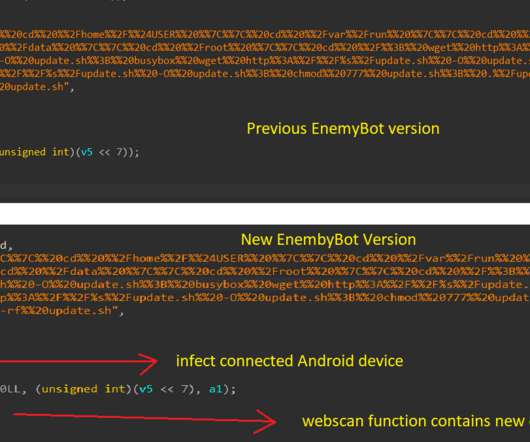EnemyBot malware adds new exploits to target CMS servers and Android devices
Security Affairs
MAY 30, 2022
The botnet was first discovered by Fortinet in March, the DDoS botnet targeted several routers and web servers by exploiting known vulnerabilities. The researchers attribute the botnet to the cybercrime group Keksec which focuses on DDoS-based extortion. The botnet targets multiple architectures, including arm, bsd, x64, and x86.















Let's personalize your content